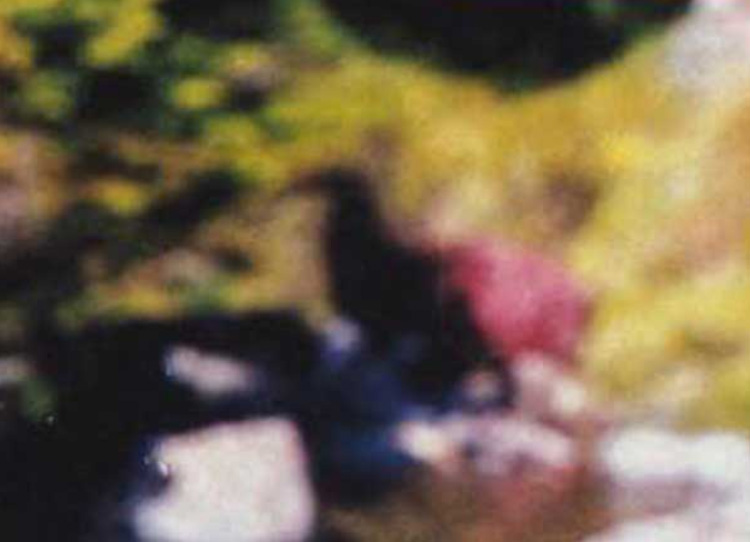An Ornithological Enigma: The Arthur's Pass Moa Photograph
The archipelagos of Oceania have been an epicenter of the sixth mass extinction, with many unique species unequipped to handle the arrival of mankind. Flightless birds in particular were vulnerable to invasive species, deforestation, and human overhunting. Few of these ecological losses have been more tragic than that of the many moas that once thrived on Aotearoa. There were at least nine species of these large ratites, the largest of which stood at over eleven feet high at its tallest. The moas were long gone by the time of European contact, having been slaughtered by the Māori.
Because of their recent demise, along with the unique
climate of New Zealand, Moa fossils are rather abundant helping ornithologists
best understand these forest behemoths. Some remains have been naturally
mummified by dry cold conditions, allowing great detail including skin and
flesh to be excellently preserved, such as this eerie head.
As with many other recently extinct species, sightings did
not totally vanish when the animals did. Moas have found a persistent, though
small, niche within the field of cryptozoology. The appeal of them surviving is
obvious, and in all honestly, moas are far more plausible than the vast
majority of cryptids. There’s a bittersweet romanticism to the idea that in
some remote woodland overlooked by man, they continue to prosper.
Most of these supposed moa sightings are merely eyewitness
accounts without any other evidence. However, one unusual and mostly forgotten encounter
resulted in a photograph being taken. This is to moas what the Patterson
Footage is to Bigfoot, and today we look at the story of the Craigieburn Range
sighting and photo.
The event occurred on January 20, 1993, at Arthur’s Pass,
located in the Craigieburn Range of the South Island’s alps. The witnesses were
hikers Paddy Freaney, Rochelle Rafferly, and Sam Waby. The creature was
described as being covered with feathers of reddish-brown and gray hues, with
only the area below the knee joint un-feathered. It was a meter tall with a
horizontal neck another meter along, complete with huge feet. Instantly,
Freaney knew it was a moa.
The bird became startled and began to run away, but Freaney
chased after it and snapped a blurry photograph of it when he was approximately
35 meters away from the goliath paleognath. Looking at the photo, it appears
that the moa has raised its neck vertically with its diminutive head facing
toward the intruders. Rocks are blocking the view of its legs. Pictures were
also taken of the bird’s footprints.
The photo caused quite a stir at the time and the original
negatives were heavily analyzed by a team at the University of Canterbury. The
results were inconclusive. However, the photo doesn’t appear to be doctored in
any way, suggesting whatever it depicts is a real object. Some experts opined
it was an emu, though that seems rather unlikely. Emus are not native to New
Zealand, and none in captivity had been reported missing. Additionally, Freaney
was familiar with emus and stated that his bird was larger than any he had ever
seen.
More plausible is that the photo is of a red deer. Deer were
introduced to South Island from Europe in the 1860s and have continued to
thrive as an alien species. The picture certainly bears a resemblance to a
cervid, suggesting that it’s a doe or antlerless buck looking at the
photographer. Other proposals include smaller birds including Australasian
swamphen, woodhen, and Takahē. This could be the case if the object in the
photo is littler than claimed.
Adding to the plausibility of the sighting is the fact that
two Germans claimed to have seen a moa around the same location at a later
date.
According to Ian Roy, an employee at the New Zealand Embassy
in Washington D.C., the government was New Zealand was taking the story very
seriously. The New Zealand Department of Conservation planned a search party,
but it was called off. Freaney expressed frustration over the skepticism of his
encounter and over the years partook in several small expeditions looking for
his avian giant.
Some alleged that Freaney hoaxed the ordeal to bolster his
nearby hotel business, indeed the area got renewed tourism due to the story
hitting the international press. Further rumors among the locals held that
suspicious events happened the day before the sighting. Freaney and his fellow
observers had gone to the Canterbury Museum in Christchurch while impersonating
zoologist workings. They took the museum’s life-size moa replica, claiming they
were doing repair work. According to the gossip, somebody saw the moa in the
back of Freaney’s pick-up truck as it drove up the mountain passes, the same
automobile seen outside the museum earlier. If Freaney truly staged it with a
stolen moa that was then returned, it’s surprising he wasn’t caught red-handed.
Could the Canterbury Museum mayhap have record of such an
event three decades later?
Freaney died in 2012. An avid mountaineer, his ashes were
scattered at the peak of Mt. Everest. As for the photo negatives, I’m unaware
of what happened to them.





Comments
Post a Comment